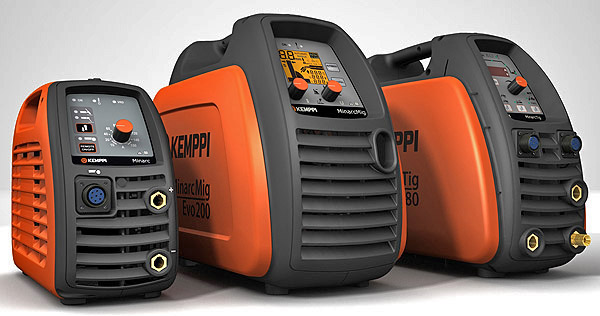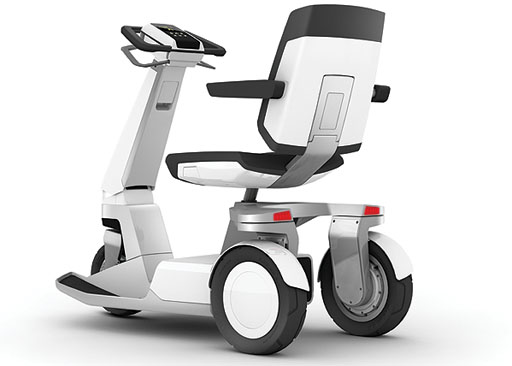| You are here: Home » Import CAD Formats » STEP |

|
STEP (or 'ISO standard 10303', "Standard for the Exchange of Product Data") is a complex set of specifications which define data exchange standards for a wide range of industries and applications. Each are defined, maintained and ratified by various ISO technical committees. STEP AP203 & AP214 are the main CAD vendor-neutral 3D data translation file formats which were designed for high fidelity data exchange between all major professional 3D MCAD & CAD modelling applications. They have evolved as a successor to the IGES vendor-neutral file format but today you will find STEP and IGES data files coexisting with each other.
STEP files are composed of numerous "parts", which are ratified specifications (documents) in their own rights. The term "part" should not be confused with the common "geometry part file" term which is used in the MCAD industry (whereby most MCAD files are defined as either an "assembly file" or a "3D geometry part file"). STEP parts (document specifications) range from high level "application protocols" (such as AP203, AP214, AP242) to low level generic resouces such as geometric representations (#41) and materials (#45).
STEP files from the CAD and MCAD industry will typically contain these fundamental elements and structures:
- NURBS analytic/parametric geometry
- NURBS/bicubic curves & 3D polylines
- 'BREP' topology information (to define 'solids' geometry)
- CAD assembly hierarchy and structure
- Geometry instancing
- Part naming
- Meta data
- Unit-of-measure, geometric tolerance and other cursory source-modeller information
- And basic materials.
Most people initially come to Okino asking for a STEP importer. STEP is a very fine and stable MCAD conversion file format but it should only be used in specific situations as outlined in our "CAD Data Sourcing Suggestons and Rules".
If you do not have access to the original native CAD files then STEP AP214 would be the best file format to request from your data vendor, or a properly exported "IGES BREP Solids" file. You will want to ask for such STEP files to be exported as 'BREP solids' (and not 'Surfaces') and in the STEP AP214 variation.
Okino's PolyTrans|CAD provides the defacto 3D STEP file import conversion solution used by the world's primary & professional engineering, aerospace, military, corporate, animation/multi-media and VR/AR industries.
Okino came to pioneer the MCAD conversion market over the last 30+ years and as such our STEP import solution has been designed to handle super-ultra-massive datasets that would otherwise choke and drag other conversion solutions to their knees. Okino software is well known, and sold specifically, for its ability to handle STEP files from the very smallest to the very largest in a rock solid and robust + efficient manner.
CP3 Scooter Concept Image. Converted via Okino's PolyTrans|CAD System.
Artist: Christoph Bodensieck, © Industrial PDD & Switch Mobility.
Click on image to see full scale rendition.
Technical details about Okino's STEP importer can be read here.
Okino also recommends that you import your CAD files via these native importers (among others):
|
Autodesk Inventor
CATIA v5 Microstation ProE/Creo Rhino 3D Solid Edge SOLIDWORKS |

|
The very first question that we ask of our new customers is 'From which MCAD program is your STEP file coming from?'. That can be very important information, depending on the name of the source MCAD program.
STEP files are easily read ASCII text files that can be opened in any general text editor. After opening the file in such a text editor you will want to look for the text labelled 'FILE_NAME' close to the start of the file. The name of the originating MCAD program will usually be defined within that sub-section. The following are some typical examples:
FILE_NAME ('FILENAME.STEP', 'T08:28:23', ("), ("), 'SwSTEP 2.0', 'SolidWorks', ''); FILE_NAME('FILENAME.stp', 'T02:22:23',("),(''), 'Inventor,'Autodesk Inventor',''); FILE_NAME('FILENAME', 'T23:57:22',("),(''), 'PTC','CREO PARAMETRIC',''); FILE_NAME( /* name */ 'FILENAME', /* time_stamp */ 'T18:05:02+01:00', /* author */ ('My Name'), /* organization */ ('Company Name'), /* preprocessor_version */ 'ST-DEVELOPER v10', /* originating_system */ 'UGS - NX', /* authorisation */ '');
Top level parts in a STEP file are referred to as "application protocols" (APs). These application protocols then reference generic parts of ISO 10303 to meet specific data exchange requirements for a particular application or industry. For the sake of Okino customers, the common APs used to transfer MCAD 3D data are AP203, AP214 and the newer AP242 (with AP203 and AP214 being the most pervasive).
- AP203 (and parts 1, 11, 21, 31, 41, 42, 43, 44, 46 and 101) were first published by ISO in 1994. Its official title is Configuration controlled 3D designs of mechanical parts and assemblies. AP203 remains a fundamental aspect of STEP file import and export in many MCAD progrms.
- AP214 was a second phase of STEP's evolution (ending in 2002) which catered to the aerospace, automotive, electrical, electronic and other industries. Its official title is Core data for automotive mechanical design processes. AP214 is essentically the same as 'AP203 Edition # 2' in the MCAD domain.
- AP242 was created to overcome some defeciencies of AP204 and AP214, notably their large APIs, too much overlap between APIs and lack of harmonization. The first edition was published by ISO in December 2014. Its official name is Managed model based 3D engineering. AP242 was created by merging the top level protocols of AP203 (aerospace) and AP214 (automotive). AP242 also added in the capability of simplified tessellated shape representations.
AP203 (Configuration controlled 3D designs of mechanical parts and assemblies) is a core and fundamental aspect of the STEP file format specification used within the MCAD and CAD industries. The first edition was published by ISO in 1994.
Core capabilities include:
- Products that are mechanical parts and assemblies;
- Five types of shape representations: wireframe and surface without topology, wireframe geometry with topology, manifold surfaces with topology, faceted boundary representation, and boundary representation.
Editition # 2 (of 2011) incorporated key aspects of AP214, in partcular color and layer capabilities.
AP214 (Core data for automotive mechanical design processes) is another core STEP file format variation used within the MCAD and CAD industries. The first edition was published by ISO in 2002.
As its formal definition:
AP214 describes an application reference environment for the generation and exchange of volume based design data in the Computer Aided Mechanical design process, together with appropriate data models and a physical file implementation form. The information model supports all geometric and topological aspects of a complete description of the shape and size of an object. It was originally developed for applications in mechanical engineering design using the CAD modelling technique boundary representation (B-rep) solid modelling and may be appropriate for other appliication areas using this technique.Core capabilities include:
- Three types of B-rep model that are used to represent shape:
- Facetted B-rep model;
- B-rep model with elementary surfaces;
- B-rep model with sculptured surfaces;
- Curve and surface geometry;
- Curves defined in parameter space (pcurves);
- Manifold topology;
- Units and measures associated with geometric elements;
- Assemblies of parts and sub-assemblies.
AP242 (Managed model based 3D engineering) was created by merging the top level protocols of AP203 (aerospace) and AP214 (automotive). The first edition was published by ISO in December 2014 with a goal to succeed in the merging and replacing of AP203 and AP214, as well as to extend them with some needed complementary capabilties.
Edition 2 (in progress) is an extension to the electrical design domain with specific enhancements for PDM, 3D geometry, 3D PMI, composite and mechanical design. Another goal of AP242 is for long term CAD data archiving. It is of strategic importance for the aerospace and defence industry, and for the automotive industry.
AP242 added in the capability of simplified tessellated shape representations. It was also designed as a modular file format to overcome some defeciencies of AP204 and AP214, notably their large APIs, too much overlap between APIs and lack of harmonization.
A STEP file is generally easy to read, with typically one instance per line. This section will provide a very coarse overview of how to visually read the ASCII contents of a STEP file.
Let it first be said that STEP files are unduly verbose and large. For example, the definition of simple 3D vertex coordinate (-2.0, 0.9, 0.8) takes up an entire line in the file as follows (and many STEP files could have hundreds of thousands to millions of these basic geometric coordinates):
#48=CARTESIAN_POINT('Ctrl Pts',(-2.0, 0.93687370014661, 0.8185109331703));For this example we will examine the definitiion of a simple geometric sphere model created by Autodesk Inventor. In some 3D file formats the definition of a sphere could be as simple as one line but STEP requires 206 lines. For brevity, we'll provide the full STEP file listing in a separate HTML page for your review.
From the original step file we have chosen to break out, simplify and re-arrange a portion of it which defines just the BREP topology of the sphere primitive. This re-arrangement of the lines of the file has been done in the following hierarchical manner, whereby each line references a child entity from another line.
#12=ADVANCED_BREP_SHAPE_REPRESENTATION('',(#14),#108); #14=MANIFOLD_SOLID_BREP('Solid1',#25); #25=CLOSED_SHELL( '',(#24)); #24=ADVANCED_FACE(' ',(#15), #23,.T.); #15=FACE_OUTER_BOUND(' ', #16,.T.); #16=EDGE_LOOP( '',(#21,#22)); #21=ORIENTED_EDGE( '',*,*, #20,.T.); #22=ORIENTED_EDGE( '',*,*, #20,.F.); #20=EDGE_CURVE( '',#18, #19,#17,.T.); #17=B_SPLINE_CURVE_WITH_KNOTS(' ' ,3,(#99, #100, ... ...etc... #18=VERTEX_POINT( '', #97); ...etc... #19=VERTEX_POINT( '', #98); ...etc... #23=B_SPLINE_SURFACE_WITH_KNOTS( '',3, 3,((#48, #49, ... #48=CARTESIAN_POINT( 'Ctrl Pts',(-2., -0.06, -0.1)); ...etc...In this manner the STEP file, and its entity hierarchy, is much easier to understand. Each instance is defined by a unique identifier number, beginning with a '#' (such as '#12'). The name of the single entity data type is written in upper case, such as "ADVANCED_BREP_SHAPE_REPRESENTATION". Each entity makes reference to one or more children entities by way of their unique instance identifier numbers.
Okino's PolyTrans|CAD imports, optimizes and intelligently converts STEP files into all major 3D file formats, animation packages, military VisSim, virtual reality (VR) and augmented reality (AR) systems (such as Unity and Unreal Engine), and third party/OEM integrations.
STEP part and assembly files can be effortlessly and directly converted into such popular & common destinations such as:
- STEP (.step, .stp) to AutoCAD (.dwg, .dxf)
- STEP (.step, .stp) to 3ds Max (.max)
- STEP (.step, .stp) to CADMATIC (.3dp)
- STEP (.step, .stp) to CINEMA 4D (.c4d)
- STEP (.step, .stp) to COLLADA (.dae)
- STEP (.step, .stp) to DWF-3D (.dwf)
- STEP (.step, .stp) to FBX (for Unity, Unreal and MODO)
- STEP (.step, .stp) to JT Open (.jt)
- STEP (.step, .stp) to LightWave (.lws, .lwo)
- STEP (.step, .stp) to Maya (.mb)
- STEP (.step, .stp) to Microstation DGN (.dgn)
- STEP (.step, .stp) to OpenFlight (.flt)
- STEP (.step, .stp) to NGRAIN 3KO (.3KO)
- STEP (.step, .stp) to Rhino-3D (.3dm)
- STEP (.step, .stp) to SketchUp (.skp)
- STEP (.step, .stp) to STL (.stl)
- STEP (.step, .stp) to Visual Components
- STEP (.step, .stp) to Acrobat-3D (PDF via U3D) (.u3d)
- STEP (.step, .stp) to VRML2 & X3D (.wrl, .x3d)
- STEP (.step, .stp) to Wavefront (.obj)
- STEP (.step, .stp) to dozens more 3D file formats

Kemppi Welding Machines, STEP to LightWave, by Spikey Animation and Kemppi Oy. See explanation here.


